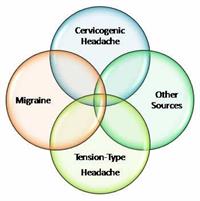- Appointments
- Clinics
- Injuries & Conditions
- Sports Injury Management
- Soft Tissue Injuries
- Spinal Pain
- Neck Pain
- Thoracic
- Back Pain
- Lower Back Pain
- Bulging Disc
- Pulled Back Muscle
- Lumbar Facet Joint Pain
- Degenerative Disc Disease
- Osteoporosis & Osteopenia
- Sacroiliac Joint (SIJ)
- Sciatica
- Scheuermann’s Disease
- Scoliosis
- Spinal Stenosis
- Spondylosis
- Spondylolysis
- Spondylolisthesis
- Ankylosing Spondylitis
- Pregnancy Back Pain
- Swimmers Back Pain
- Kids Back Pain
- Arm Pain
- Neck Arm Pain
- Shoulder Pain
- Elbow Pain
- Hand & Wrist Pain
- Kids Arm Pain
- Leg Pain
- Hip Pain
- Groin Pain
- Thigh Pain
- Hamstring Pain
- Knee Pain
- Knee Sports Injury
- Knee Ligament
- Meniscus Tear
- Knee Bursitis
- Patellofemoral Pain Syndrome (PFPS)
- Chondromalacia Patella
- Patella Dislocation
- Patellar Tendinopathy
- Patella Enthesopathy
- Fat Pad Syndrome
- ITB Syndrome
- Osgood-Schlatter Disease
- Sinding Larsen Johansson Syndrome
- Plica Syndrome
- Pes Anserinus
- Superior Tibiofibular Joint
- Popliteus Tendinopathy
- Baker’s Cyst
- Knee Replacement
- Calf Pain
- Shin Pain
- Ankle Pain
- Heel Pain
- Foot Pain
- Kids Leg Pain
- Headache, Neck & Jaw Pain
- Arthritis
- Fractures (Broken Bones)
- Muscle Pain & Injury
- Ligament Tear
- Tendinopathy
- Vestibular Physiotherapy
- Neurological
- Women’s Health
- Men’s Health Physiotherapy
- Understanding Pain
- General Health Tips
- Services
- Physiotherapy
- Acupuncture & Dry Needling
- Balance Physiotherapy
- Bike Fit Physio
- Group Exercise Classes
- Headache, Neck & Jaw Pain
- Men’s Health
- Pilates
- Post-Fracture Physiotherapy
- Post-Operative Rehabilitation
- Posture Correction
- Respiratory Physiotherapy
- Rheumatology Physiotherapist
- Spinal Physiotherapy
- Sports Physiotherapy
- TeleHealth Physiotherapy
- Real-Time Ultrasound Physiotherapy
- Vestibular Physiotherapy
- Women’s Health Physiotherapy
- Kids Sports Injuries
- Massage Brisbane
- NDIS Physiotherapy
- Pilates
- Exercise Physiology
- Corporate Wellness
- Physiotherapy
- Sports
- Treatments
- Physiotherapy Treatment
- Soft Tissue Injuries
- Sports Physiotherapy
- Acupuncture & Dry Needling
- Post-Fracture Physiotherapy
- Back Pain Physiotherapy
- Neck Strengthening
- Shoulder Pain Relief & Treatment
- Knee Treatment
- Exercise Programs
- Flexibility Improvement
- Injury Prevention Programs
- Vestibular Physiotherapy
- Joint Pain Relief
- Balance Training
- Real-Time Ultrasound Physiotherapy
- Respiratory Physiotherapy
- Electrotherapy & Local Modalities
- Products
- Jobs
- News & Social Media
- Search PhysioWorks


